Reading Time: 2 minutes The dietary preferences of free-range cattle are being studied like never before — and the findings could boost productivity, influence cattle breeding, and lighten the environmental footprint of herds. “This is pioneering work — no one has ever at this scale linked together the productivity and associated economics, genetics and environmental outcomes of free-range grazing,” […] Read more
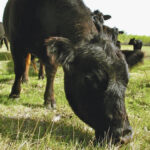
When cows have a choice of chow, what tickles their palate?
Knowing forage preferences of free-range cattle could help boost productivity and influence breeding

Grazing benefits riparian health
Reading Time: < 1 minute Managed grazing in riparian areas pays dividends, says Cows and Fish, which has released results of an assessment of ranches along two headwater streams of the Bow and Oldman rivers. The sites had already been assessed twice over the last two decades. Not only had the riparian health improved but is now above the provincial […] Read more

Rotational grazing set to get a boost from climate action plan
Advocates say the system boosts profits and makes ranches more resilient to drought
Reading Time: 4 minutes Many farmers fear the effort to reduce greenhouse gas emissions is going to cost them money. But a new federal program may assist livestock producers in upgrading to a grazing system that advocates say is more profitable and makes ranches more resilient. The federal government wants more cattle producers to adopt rotational grazing and is […] Read more
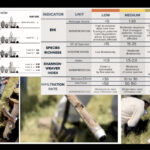
Program measures pasture progress by the numbers
Rather than focus on a theory, Ecological Outcome Verification relies on tracking measurable parameters
Reading Time: 3 minutes Years of researching how to get the most out of the pastures on his southern Ontario beef farm left Cory Van Groningen frustrated. “One book says only take the top sward and leave the rest to regrow; another book says use high-intensity grazing and trample it down; another book says take a third of the […] Read more
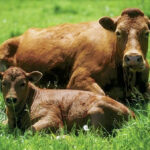
Schoepp: A solid foundation is key to resilience and can’t be neglected
This summer spoke volumes about the need for rotational grazing and regenerative practices
Reading Time: 3 minutes General Motors declared bankruptcy in June of 2009 after steadily losing money since 2005. GM’s plight has become a case study and is often used in education programs for directors on boards, but it also holds a lesson for farmers. During the time of its decline, GM was scrambling to produce a vehicle for everyone […] Read more
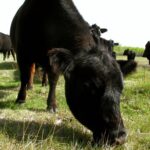
Feeding site permit requirement suspended
Reading Time: < 1 minute The Natural Resources Conservation Board is suspending the requirement for a permit for a temporary confined feeding site. The government agency “recognizes that due to the current very dry conditions and poor grass pastures, summer feeding of cow-calf herds may be required (and)… will not require producers to obtain permits” for temporary confined feeding. However, […] Read more

New grazing stewardship program for 6,000 Prairie acres
Program has a component to help ranchers adopt multi-paddock grazing and regenerative agriculture
Reading Time: 3 minutes After growing its acres by 20 per cent last year, ALUS has lined up two big sponsors for a new initiative called Grazing Forward that will fund stewardship projects on 6,000 acres of Prairie ranchland. “A&W Canada and Cargill will together provide $1.8 million to support ranchers in Alberta, Saskatchewan and Manitoba as they continue to […] Read more

Feed weekly outlook: Heat reducing potential yields, raising prices
MarketsFarm — The hot and dry summer that has enveloped all of Western Canada is already bringing down projected yields for feed grains, creating an inverse effect on prices. “We’re losing the crop here right now with the heat and lack of moisture across the Prairies and the northern Plains of the United States,” said […] Read more

Saskatchewan raises salvage threshold for parched crops
Stock watering program also boosted; APAS, Tories' ag critic had called for more drought aid
Saskatchewan’s provincial crop insurance agency is raising the yield threshold at which drought-damaged crops can be grazed, baled for greenfeed or cut for silage with no penalty on future coverage. Saskatchewan Crop Insurance Corp. said Wednesday it would double the “low yield appraisal” threshold values on cereal or pulse crop acres put to feed. SCIC […] Read more
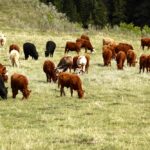
Schoepp: People need to know livestock can be good for the environment
In a regenerative program, livestock bring a host of benefits — but that fact is being ignored
Reading Time: 3 minutes Livestock have come under the magnifying lens as being destructive for the climate and for the environment. Producers have been quick to respond and Canada leads the way globally with its environmentally conscious and sustainable beef supply chain. However, society as a whole does not understand the role of livestock in systems. The concept of […] Read more

